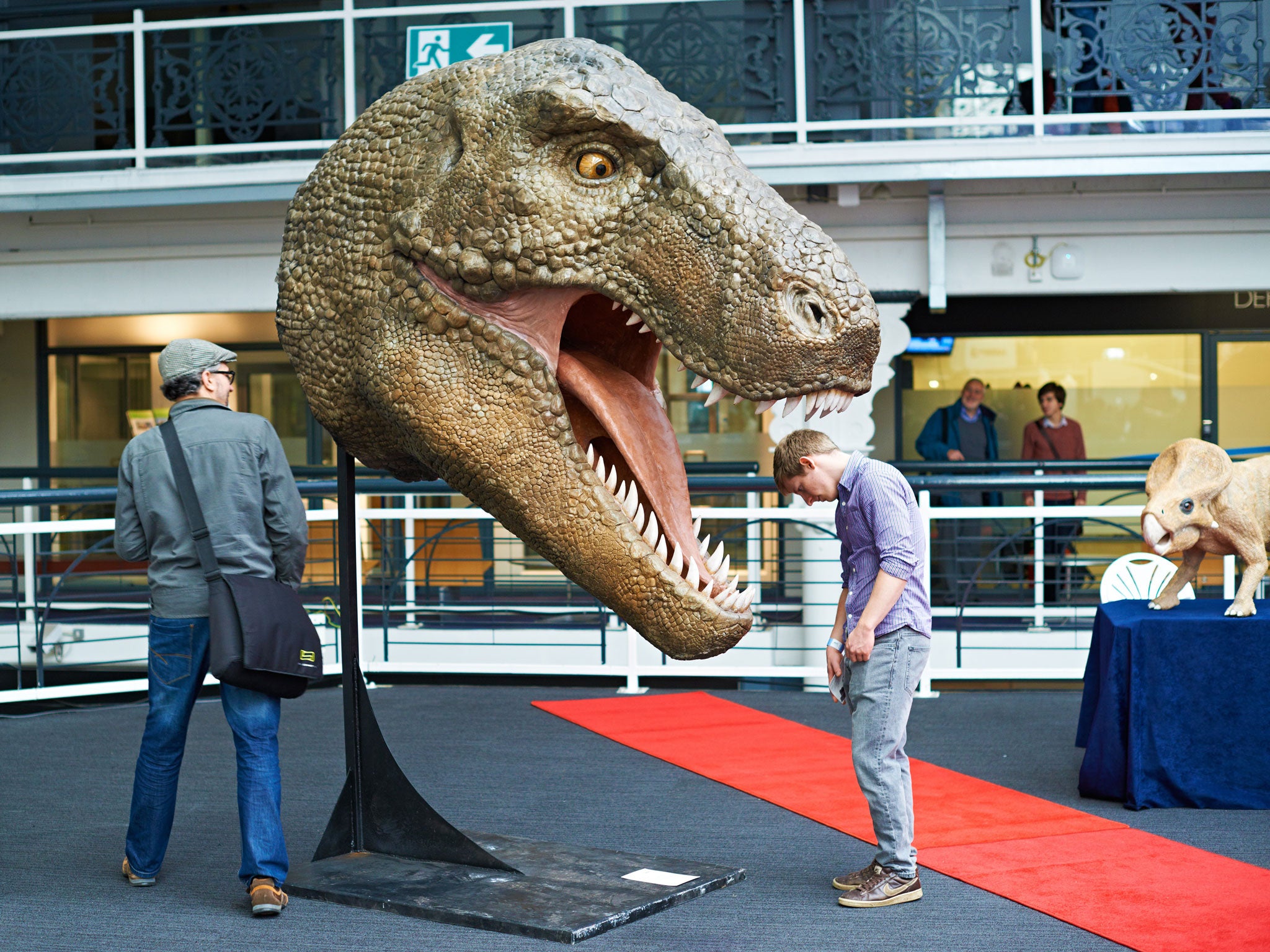Pristine Tyrannosaurus Rex skull found in US dinosaur graveyard
'When we started to see those teeth with the skull, we knew we had a fantastic specimen,' expert says of discovery at famous Hell Creek fossil site in Montana

A four-foot fossilised head of a Tyrannosaurus rex – along with its dagger-shaped teeth and lower jaw bones – has been excavated in almost pristine condition from the famous Hell Creek site in Montana.
The 66.3-million-year-old skull – described as “very complete” – is one of only 15 virtually intact T rex heads ever found.
So far, bones from the ferocious predator’s spine, ribs and hips have also been found. These make up about 20 per cent of its body, but experts believe there are more bones to be found.
The Hell Creek area is one of the best places in the world to look for dinosaur bones, having yielded up the fossilised remains of triceratops and edmontosaurus among others.
The massive skull was painstakingly cut from the rock and then transported to the Burke Museum in Seattle encased in a protective layer of plaster.
Such is the excitement about the discovery, that the museum decided it would go on show on Saturday before the plaster layer was removed so that the public could marvel at its sheer size.
It will be taken down in October to allow experts to separate the fossil from the rock, enabling the skull to go on show for the opening of the New Burke Museum in 2019.
A team of 45 people took part in the excavation of the dinosaur, which was discovered after two museum volunteers Luke Tufts and Jason Love found its vertebrae sticking out of the hillside last year. It has been named the ‘Tufts-Love Rex’ in their honour.
It was only until this summer that paleontologists realised just how well the giant creature, which would have been about the length of a bus from tip to tail, had been preserved.
Professor Greg Wilson, of Washington University and the museum, said: “When we started to see those teeth with the skull, we knew we had a fantastic specimen.
“The combination of the skull features, the size of the bones, and the honeycomb-like appearance of the bones tell us this is a T rex. This was a very exciting moment for us.
“We think the Tufts-Love Rex is going to be an iconic specimen for the Burke Museum and the state of Washington and will be a must-see for dinosaur researchers as well.”
They believe it was aged about 15 to 25 when it died, possibly after falling into the river and drowning. It may also have died elsewhere and then been washed into the river by a flash flood.
The dinosaur would have stood about 15 to 20 feet (4.5m to 6m) at its hips and would have been more than 40ft (12m) in length, the museum said.
It is not yet known whether it was male or female but the researchers might be able to find this out if more bones are discovered.
It lived near the end of the Cretaceous period, when dinosaurs became extinct after a massive asteroid hit the Earth. A recent study concluded that it hit huge oil deposits in Mexico, sending thick black smoke all over the world, causing it to cool significantly and experience devastating droughts.
Join our commenting forum
Join thought-provoking conversations, follow other Independent readers and see their replies
Comments